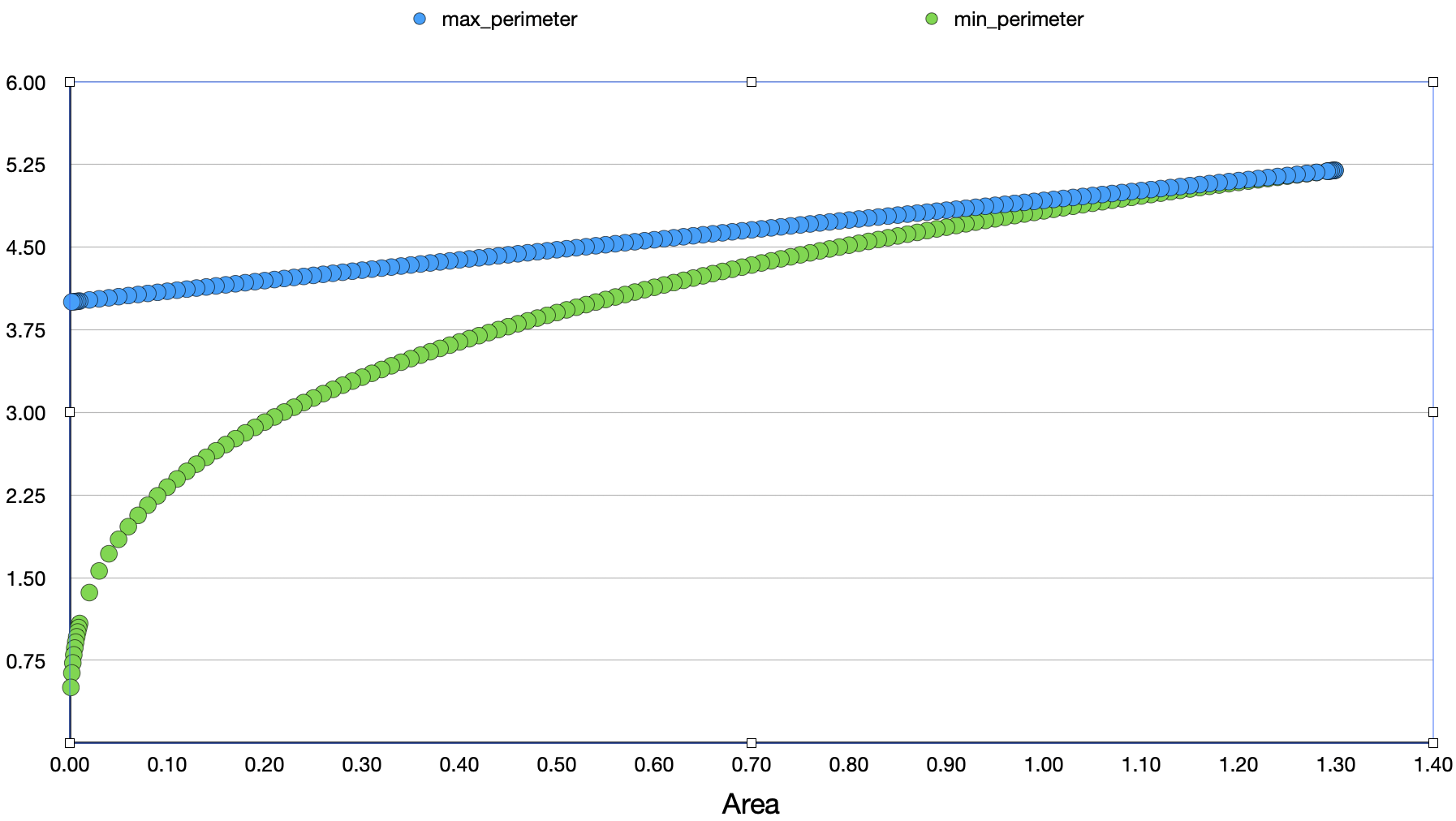This question was posted in MSE but is still open hence posting in MO.
The area of the largest triangle that can be inscribed in a circle of raidus $1$ is $\displaystyle \frac{3 \sqrt{3}}{4}$ for a equilateral triangle and it also gives the perimeter is $3\sqrt{3}$. For any $\displaystyle 0 \le x \le \frac{3 \sqrt{3}}{4}$ we can ask the minimum perimeter $f(x) $and maximum perimeter $g(x)$ of triangles with area $x$ inscribed in a circle of radius $1$. I ran a simulation to calculate the values of $f(x)$ and $g(x)$ for all $x$ in this interval and obtained the plot below.
For the maximum perimeter, trivially $g(0) = 4$ and $\displaystyle g\left(\frac{3 \sqrt{3}}{4}\right) = 3 \sqrt{3}$. The graph of $g(x)$ appears to be a straight line as shown by the blue line. Fitting a straight line through these two points gives the model
$$ g(x) = 4 + \left(4 - \frac{16}{3\sqrt{3}}\right)x \tag 1 $$
Can this be proven? For the minimum perimeter we have trivially $f(0) = 0$ and $\displaystyle f\left(\frac{3 \sqrt{3}}{4}\right) = 3 \sqrt{3}$ and $f(1) = 2+2\sqrt{2}$ corresponding to an isosceles right triangle. Fitting a curve with the data for $g(x)$ suggests a model of the form $f(x) = (2+\sqrt{2})x^a$ with $a \approx 0.306$ however this model with inconsistent with the fact that $\displaystyle f\left(\frac{3 \sqrt{3}}{4}\right) = 3 \sqrt{3}$ hence this model was discarded.
Question: What is the minimum and the maximum perimeter of a triangle with area $x$ and circumradius $1$?

